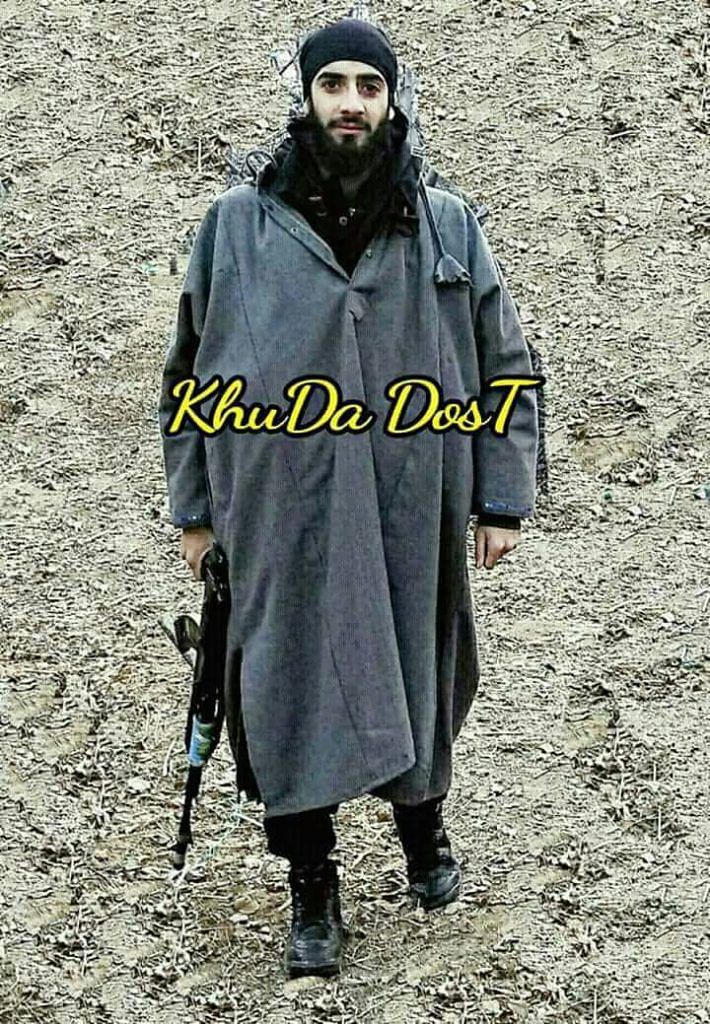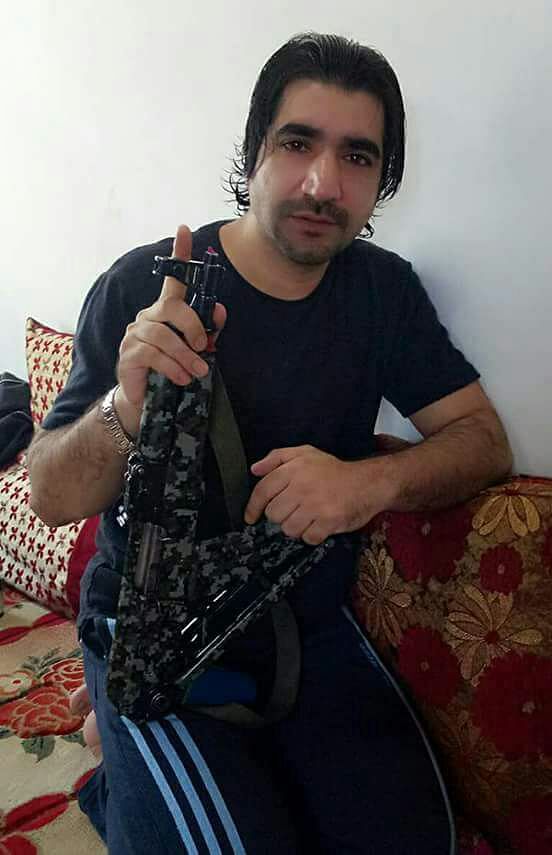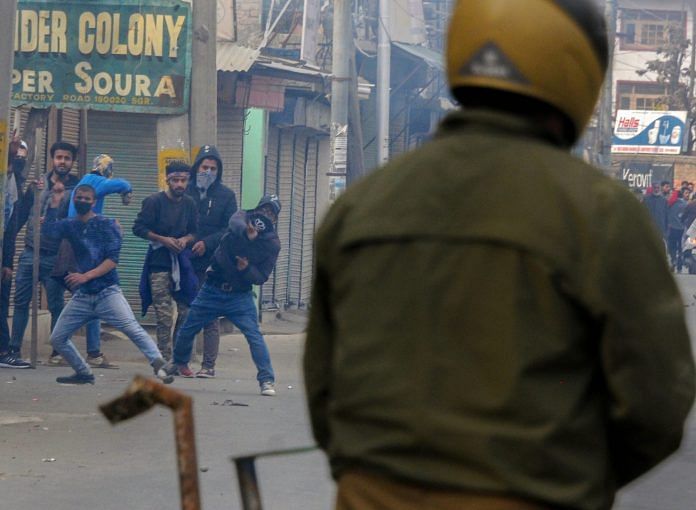Out of nearly 220 militants active across the Valley, 75-80 are from south Kashmir, says Swayam Prakash Pani, IGP of Kashmir range.
Shopian/Pulwama (South Kashmir): A heavy presence of army, state police and other security forces’ personnel is what one is greeted with on entering south Kashmir, the most restive zone in the Valley.
In Shopian and Pulwama districts, seen as a hotbed of homegrown militants in Kashmir, many youths have already left home to get arms training. There are also some who wish to take part in what they call “jung” (fight) against the Indian security forces.
While villagers said even those who got training in Pakistan during the peak militancy era failed to make any difference, there are still many youngsters who are ready to die for the “Kashmiri cause”.
According to Swayam Prakash Pani, inspector general of Kashmir range, out of nearly 220 militants active across the Valley, 75-80 are from south Kashmir.
Unlike the 1990s, local boys are now trained “within days”. It is usually the new ones who attack the security forces and escape as part of their training, police sources said.
Local militancy
Asif Ashraf Malik (20), the son of an apple farmer of Krawara village, was studying BCA. On 19 October 2017, he reportedly left for evening prayers at a mosque but did not return. His family had learnt later that he joined the ranks of local militants.

“He was never detained by police. He was good at studies. None of his friends are militants,” said Asif’s father Mohammad Ashraf Malik.
Some families have pleaded with their sons to return home. But Zarina, Asif’s mother, said: “It’s too late for him to return. He is stuck; if he returns, we all know the amount of torture the army and the police will put him through.”
When they found his phone switched off, Asif’s family filed an FIR on 20 October. Later, a picture of him holding a gun was found doing the rounds on social media.
Pani, however, said attempts are being made to convince the youths to shun violence and return to their families.
“We have followed the rules of engagement and our actions are credible as nine militants have returned and joined the mainstream,” Pani told ThePrint. “There were no custodial killings and torture reported.”
According to sources, 41 militants are active in Shopian district.
Ashiq Ameen (name changed), a villager, said that locals boys who take up arms are kept away from their homes for at least 40 days. “After that, the militant is allowed to pay a visit to his family.”
“The new recruits fire on security forces and flee. This is their training…the new generation is fearless. They are out to die,” Ameen added
‘Overground workers’
Bilal Ahmed Mohund, a government employee, had been living a happy life in Heff village in Shopian until the special task force (STF) one day picked him up and tortured him for 10 days at a police station, alleges his brother Adil Ahmed.

After some time, Mohund — who was branded as an “overground worker” — was again picked up and sent to the Udhumpur jail for 40 days.
“When police came to arrest him for the third time, he started banging his head on the wall,” Adil said.
“I am left with no option but to pick up the gun. They forced me. I will ask them on the day of judgment as to why they did this to me,” Mohund, who later joined Hizbul Mujahideen, apparently told his family.
According to the army, overground workers (OGWs) are basically the accomplices of the militants. They could be people who provide logistics and carry their messages.
Civil society organizations, however, argue that branding civilians as OGWs has no legal ground.
Khurram Parvez, coordinator of Jammu and Kashmir Coalition of Civil Society, said the army must prove legally if a person is branded an OGW.
Pervez said OGW is not a legal term and people are OGWs on the basis of intelligence inputs.
“By branding people as OGWs security forces are trying to legitimise violence and create impunity for themselves,” he added.
Militants with MPhil, PhD degrees
After the killing of young Hizbul commander Burhan Wani, a number of educated youths have joined militant groups, some of whom are M.Phil and Ph.D degree holders.
Sabzar Ahmed Sofi is one of them. He completed M.Sc and M.Phil and qualified for UGC junior research fellowship in 2016.
“He left home saying that he will go to Delhi for IAS coaching. For two months, we thought he was in Delhi until a DSP from Shopian visited us informing about Sofi,” said Sabzar’s brother Sajad, who has done an MPhil in sociology.

The list of highly educated militants also includes Aitmad Malik (M.Phil) from Amshipora, Shopian; Saifullah (Ph.D) from Malangpora, Pulwama and Adnan Lone (AIEEE qualified) from Banduna, Pulwama.
Pani disagrees that that the only the bright ones are choosing militancy over a decent career.
“It is a propaganda campaign of militants to attract more boys. In fact, there are only a handful of militants with such qualifications,” he said.
Civilians at the receiving end
After the killing of Burhan Wani, complaints of civilians being harassed by security forces have been on the rise. Hundreds of youth have been put behind bars. “Raids” in the night, “checking” and “ransom” during cordon and search operation (CASO) have become normal for the residents of Shopian, they claim.
“Army personnel barged into our houses in November last year…women were harassed. They came and broke our doors with guns and boots,” said Bashir Ahmed Bhat, resident of Turkmagam village.
Defence spokesperson Rajesh Kalia, however, denied the allegations. “It is a propaganda against the army.”
“Recently, we checked a house based on information about militants. We found anti-India graffiti on the walls. There were allegations of army ransacking that house but we proved it was not true,” Kalia told ThePrint.
At every turn, there is a camp of the army, SOG or CRPF across south Kashmir. Residents claim that in the past six to eight months, at least 10 more camps have come up in Shopian alone and civilians are under constant watch.
Social media comes in handy
Social media has emerged as a vital tool for militants to recruit youths and send out appeals. Once a local boy joins a militant group, a picture of him holding a gun is posted on social media to inform the family, friends and people in general.
It has been a trend since Burhan Wani posted his pictures and messages on Facebook.
The cyber cell of the J&K police has been keeping a tab on people glorifying militancy.
“We have noted that radicalisation is happening through social media,” J&K director general of police Sheesh Paul Vaid said. “Our cyber cell is working on it.”






